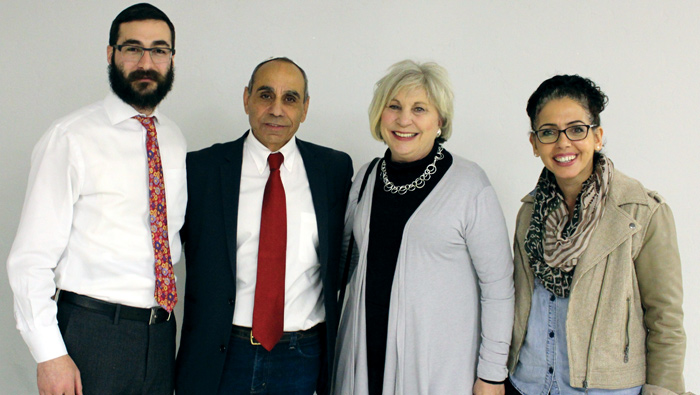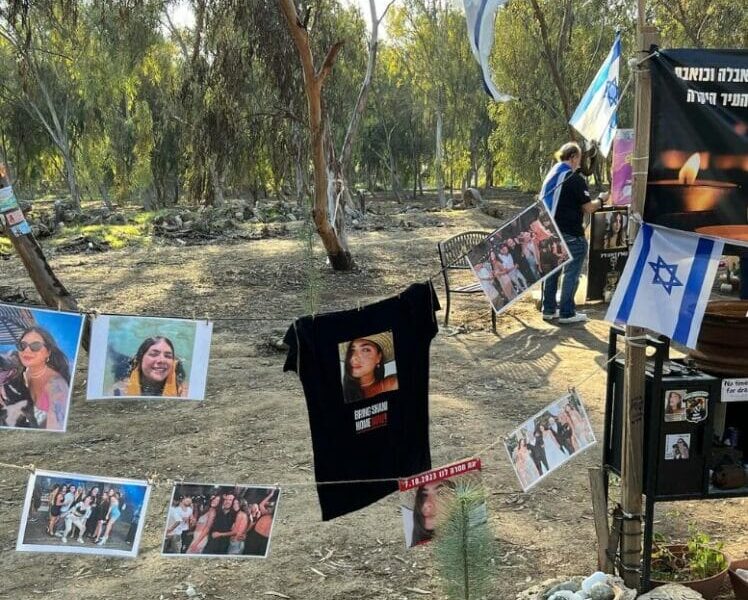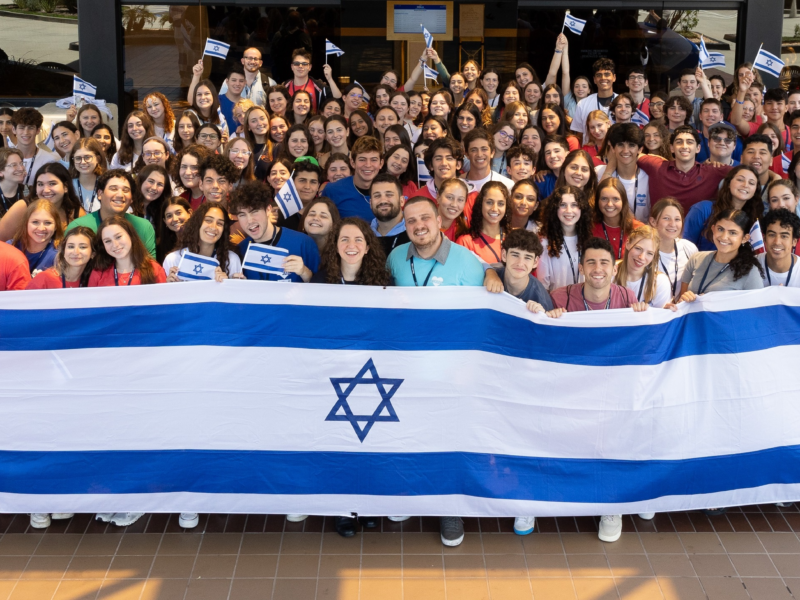Sassy Reuven shared his riveting first-hand account of one of the most daring hostage rescue missions of all times with audiences in Tucson and Scottsdale on Jan. 24 and 25. He was one of the first soldiers on the ground on July 4, 1976, for Operation Entebbe (also known as Operation Thunderbolt and Operation Yonatan), when Israel Defense Force commandos stormed Entebbe International Airport in Uganda, freeing 106 hostages taken captive a week earlier when their airplane was hijacked.
Forty years later, Sassy is traveling around the world with his inspirational tale of real-life heroism.
As an introduction to Sassy’s presentation at Chabad of Tucson, local resident Marlyne Freedman told the harrowing story of her brother, who was on the hijacked Air France plane with his wife and son, traveling to Europe after a family visit to Israel. They were among the hostages released before the dramatic rescue, as the terrorists set free all but the Israeli passengers. The incident changed Marlyne’s life. “It made me realize that Israel could not give up those prisoners [demanded by the hijackers in exchange for the hostages], because if they did, it would be suicide for Israel,” she says. “There would be one, and another and another. And I really felt that if my brother had died, he would have had to die because Israel had to live.”
Sassy was a first sergeant heading a platoon on the border with Syria in the Golan Heights when he was recruited for this top secret mission. His unit was assigned the task of neutralizing Ugandan soldiers and securing the roof of the new terminal, so that other units could safely carry out their tasks of lighting the runway, securing the perimeter of the airstrip, destroying Ugandan Air Force jets on the ground and raiding the old terminal where the hostages were held.
According to Sassy, after they arrived at the IDF base near Petach Tikvah, they had less than one day to prepare and only spent about 10 minutes training with an outline of the new terminal marked out in tape on a field. But, given their backgrounds, that was all these soldiers needed. “For two and a half years we were training day in and day out. We were very well trained in many aspects of ground force missions, as well as hostage situations. This was just to get us into the mood,” says Sassy, who now lives in Calabasas, CA, where he owns a construction development company.
During their final briefing, before leaving the Air Force base at Sharm el-Sheikh, commander Dan Shomron said, “You are going to bring the morale back to our country and to Jews all over the world. You are going to bring the Jews back home.” Sassy said he felt a heavy weight on his shoulders, but at the same time, he felt privileged to go and bring Jews back to safety, back to Israel.
The logistics and intelligence preparations involved in transporting 212 soldiers – with a flying command center, mobile hospital and even a black Mercedes sedan as a Trojan horse – from Israel to Uganda, undetected, would be impressive even with today’s far more sophisticated technology. But considering the limitations of the 1970s, they are simply staggering. For example, they were given a 3 x 5 cm aerial snapshot as their only visual reference to a foreign location they had never seen, where they would be landing at night. In retrospect, Sassy learned that one-third of the intelligence they had was missing. But they managed to pull it off anyway.
Sassy spent part of the seven-hour plane ride sitting next to Yonatan Netanyahu, the only soldier to lose his life while leading the raid on the old terminal. Te two hadn’t previously connected – they were in separate units – but they spent hours in very close quarters. Sassy also spent some of the flight sleeping on the floor, under the black Mercedes sedan.
When they landed, he was the second man to jump out of the plane. As they deplaned, they put on white hats, so they’d be able to recognize each other in the dark. He was one of three soldiers who led his team in a spearhead formation as they ran to the new terminal and headed upstairs to secure the roof.
While he was on the mission, Sassy says his mother was worried because she didn’t hear from him for several days. “She told my brother, ‘Listen, Eli, for the past two days Sassy didn’t call. Is it possible he went to Entebbe?’ He said, ‘Mom, relax. They only take the best of the best.’”
After their return and debriefing, the soldiers were given a day off to rest before returning to their posts. Instead of a hero’s welcome or a ticker-tape parade, Sassy unceremoniously hitchhiked home – a common mode of transportation for IDF soldiers back then. By chance, friends from his parents’ neighborhood in Be’er Sheva were driving back from Tel Aviv, saw him by the side of the highway still in uniform, with all of his gear, and stopped to pick him up. As he climbed into the back of their pickup truck, his neighbor opened the little window between the cab and the truck bed and said, “Sassy, what do you think of those heroes?”






